All About Shadows
Introduction
There is no way to create perfect or realistic shadows in AutoCAD but there are various options that can be used to create approximate shadow effects. The choice of shadow will often depend upon the object casting the shadow. For example, there is no difference between volumetric and raytraced shadows as cast by solid opaque objects. However, there is a difference between the two shadow types when cast by a transparent or translucent solid object. Volumetric and raytraced shadows give the best definition and are easier and more reliable to work with but they don't have the soft edges that many real shadows have. Shadow maps do have soft edges but they are difficult to control (there is no real-time preview) and they don't give particularly realistic results.The 3 Shadow Types
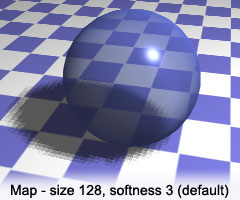 | 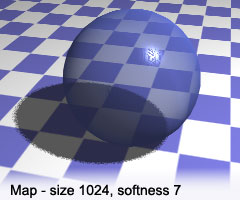 |
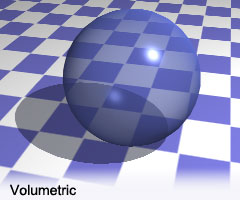 | 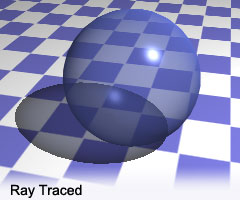 |
The image on the bottom left was created using a volumetric shadow. The shadow is well defined and although it is completely flat, it is lighter, giving a better impression of a shadow cast by a transparent object. To achieve this result, you must set the render type to "Photo Real"
The image on the bottom right was created using a raytraced shadow. The shadow is well defined and it has a fine gradient which gives the impression of the shadow cast by a transparent object of varying thickness. You must set the render type to "Photo Raytraced" in order to create this type of shadow.
Shadow Map Options
 | 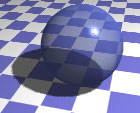 | 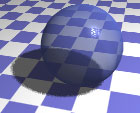 | |
| Size 512, Softness 1 | Size 512, Softness 3 | Size 512, Softness 5 | |
 |  |  | |
| Size 128, Softness 1 | Size 128, Softness 3 | Size 128, Softness 5 | |
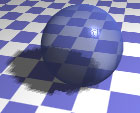 |  |  | |
| Size 64, Softness 1 | Size 64, Softness 3 | Size 64, Softness 5 | |
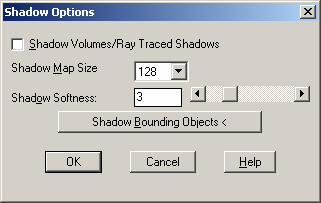
The nine images above show the effects of varying shadow map size and softness. The center image is the result of the default values, as shown in the dialogue box on the right. As you can see, the results vary from the almost realistic to the surreal. To make shadow map settings you must first have created at least one light. Then, start the Light command from the pull-down menu, select the light name from the list and then click the button. Then, in the Modify dialogue box, click the button. When the Shadow Volumes/Ray Traced Shadows check box is deselected, you will be able to set the two shadow map variables.
Shadows Cast by Opaque Objects
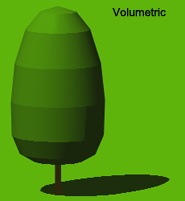 | 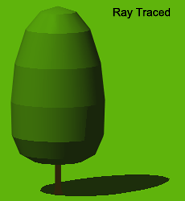 |
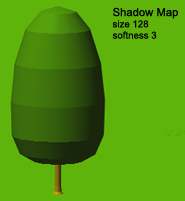 |  |  |
Conclusion
Finally, it is worth noting that although AutoCAD is good at many things, you will struggle to create photo realistic images. As an example, here is an image created using a basic render in Bryce. As you can see, the quality is far superior to AutoCAD and in addition to the beautiful raytraced shadows, you also get reflection effects and a much better sense of the density of the object.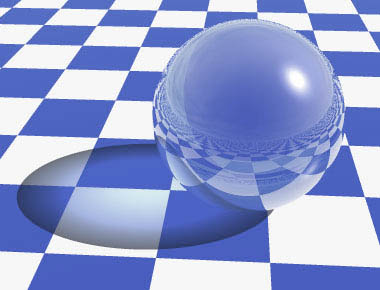
 8:40:00 AM
8:40:00 AM
 tutorial_mania
tutorial_mania
 Posted in
Posted in


0 comments:
Post a Comment